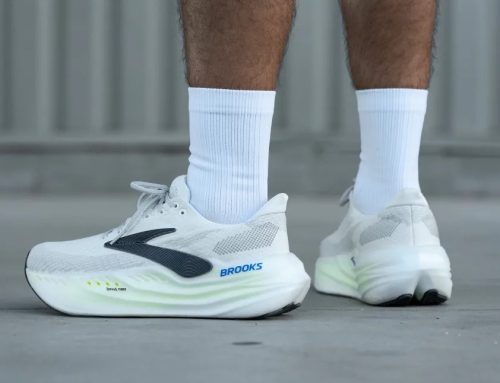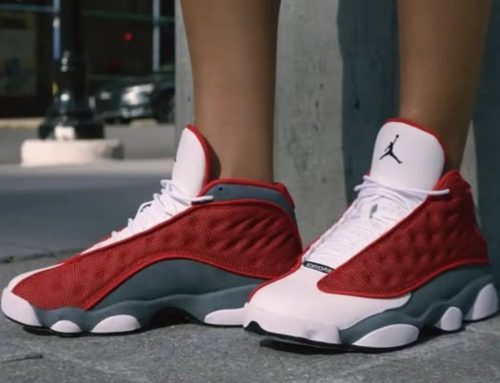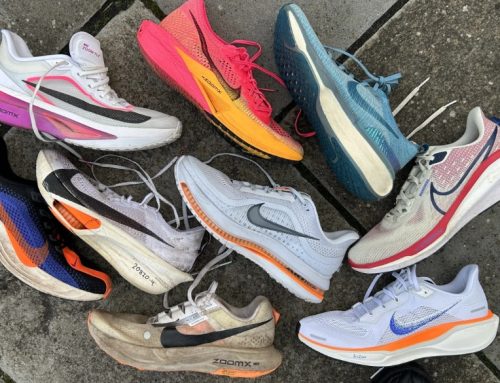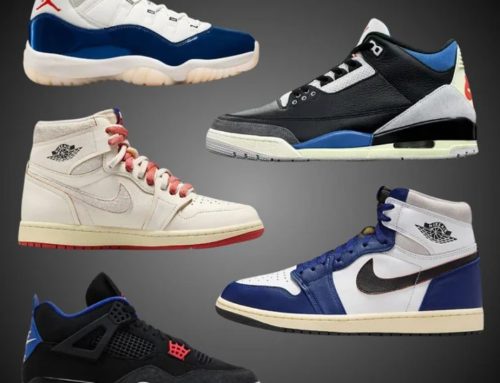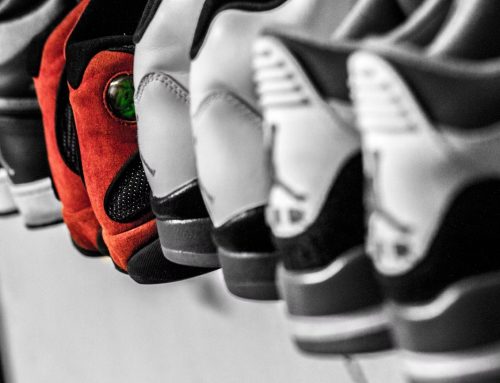Are you tired of foot pain dictating your day? Do you believe that orthopedic sneakers have to be bulky or unstylish? I’m here to tell you that’s a myth! Modern footwear technology has revolutionized the market, offering incredible comfort, support, and sleek designs. This guide will help you discover the perfect pair of best orthopedic sneakers that not only alleviate your pain but also complement your style. Get ready to experience what truly comfortable and supportive footwear feels like, from your daily strolls to your most active days.
What are Orthopedic Sneakers and Why Them Matter
When we talk about orthopedic sneakers, we’re discussing footwear specifically designed to support your foot health, correct alignment, and alleviate discomfort caused by various conditions. Unlike regular comfortable shoes that might just offer cushioning, orthopedic sneakers are engineered with precise features to provide structured support. Think of them as a foundation for your entire body, influencing everything from your ankles to your spine.
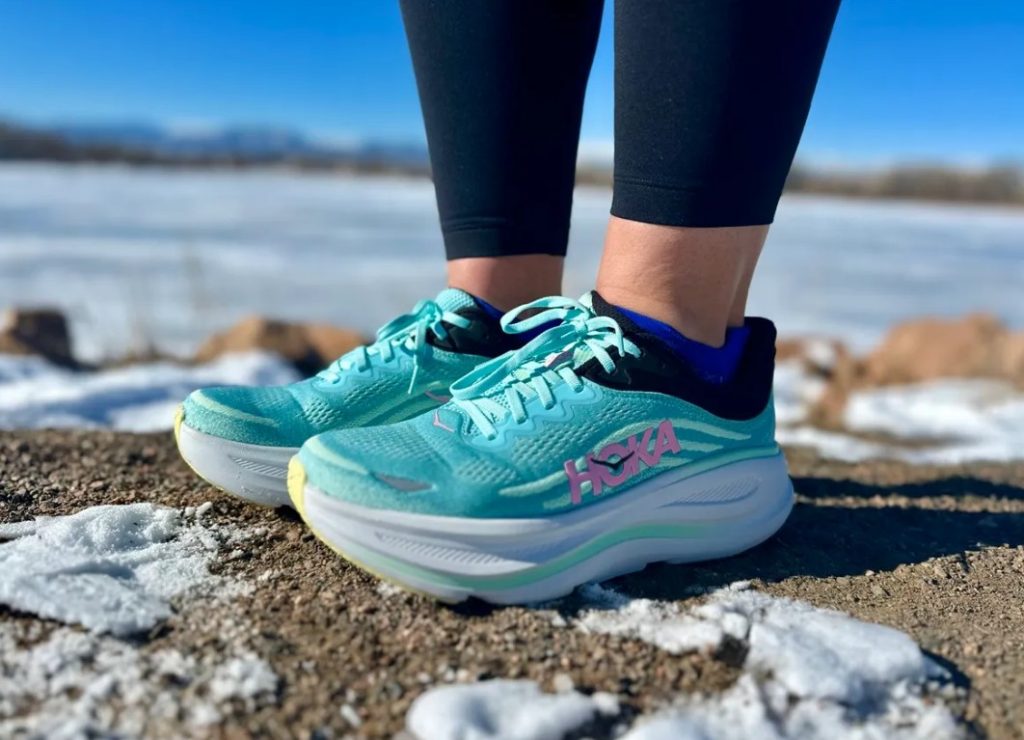
Why Choose Them?
- Targeted Pain Relief: Whether you suffer from plantar fasciitis, bunions, heel spurs, flat feet, or arthritis, the right orthopedic sneaker can significantly reduce pain and pressure on sensitive areas.
- Improved Biomechanics: These shoes promote proper foot alignment and gait, which can have a positive ripple effect, improving posture and reducing strain on your knees, hips, and lower back.
- All-Day Comfort: Designed for extended wear, they provide superior cushioning and shock absorption, making long hours on your feet much more manageable.
You might wonder why many doctors recommend running shoes for orthopedic purposes. It’s simple: running shoes are engineered for high impact, offering advanced cushioning, robust support systems, and features like wide toe boxes that often exceed what you find in everyday footwear. Many top running brands incorporate design elements that cater perfectly to orthopedic needs, earning them seals of approval from podiatric medical associations.
5 Best Orthopedic Sneakers Series for 2025
Now for the exciting part! Based on expert recommendations, user reviews, and my own understanding, here are some of the top orthopedic sneaker series that truly stand out in 2025. I’ve focused on the latest versions available to give you the most current information.
1. Hoka Bondi Series (e.g., Hoka Bondi 9)
The Hoka Bondi is practically synonymous with maximum cushioning. If you’re looking for an incredibly plush, cloud-like experience, this is your go-to. Its generous EVA foam midsole absorbs impact like no other, making it a fantastic choice for anyone with joint pain or those who spend long hours on hard surfaces. The Meta-Rocker geometry also promotes a smooth, effortless stride.
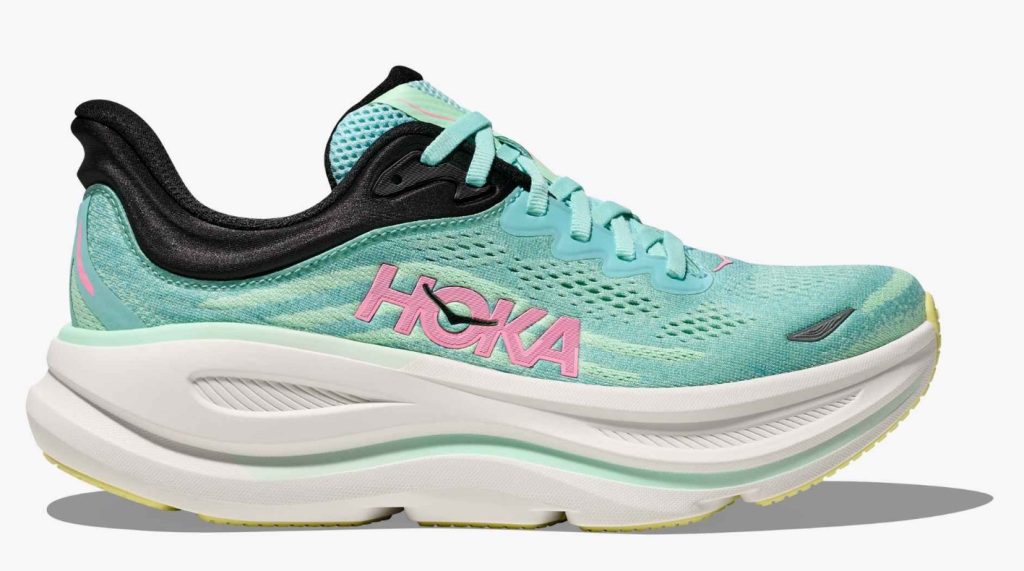
Specifications:
- Latest Version: Hoka Bondi 9 (released January 2025). The Bondi 10 is anticipated for a later 2025 release.
- Cushioning: Ultra-plush compression-molded EVA foam.
- Heel Drop: Typically around 4-6mm (can vary slightly by version).
- Weight: Around 10.7 oz (Men’s US 9).
- Outsole: Durable rubber outsole with strategic high-abrasion zones.
Key Features:
- Maximal Cushioning: Unmatched shock absorption for joint protection.
- Meta-Rocker: Promotes a smooth, efficient heel-to-toe transition.
- Breathable Mesh Upper: Keeps feet cool and comfortable.
- Wide Base: Contributes to inherent stability despite the high stack.
Colors (Examples): Available in a wide array of options including classic Black/Black, White/White, Blue Graphite/Coastal Shade, and various vibrant seasonal colorways like Lime/Peach.
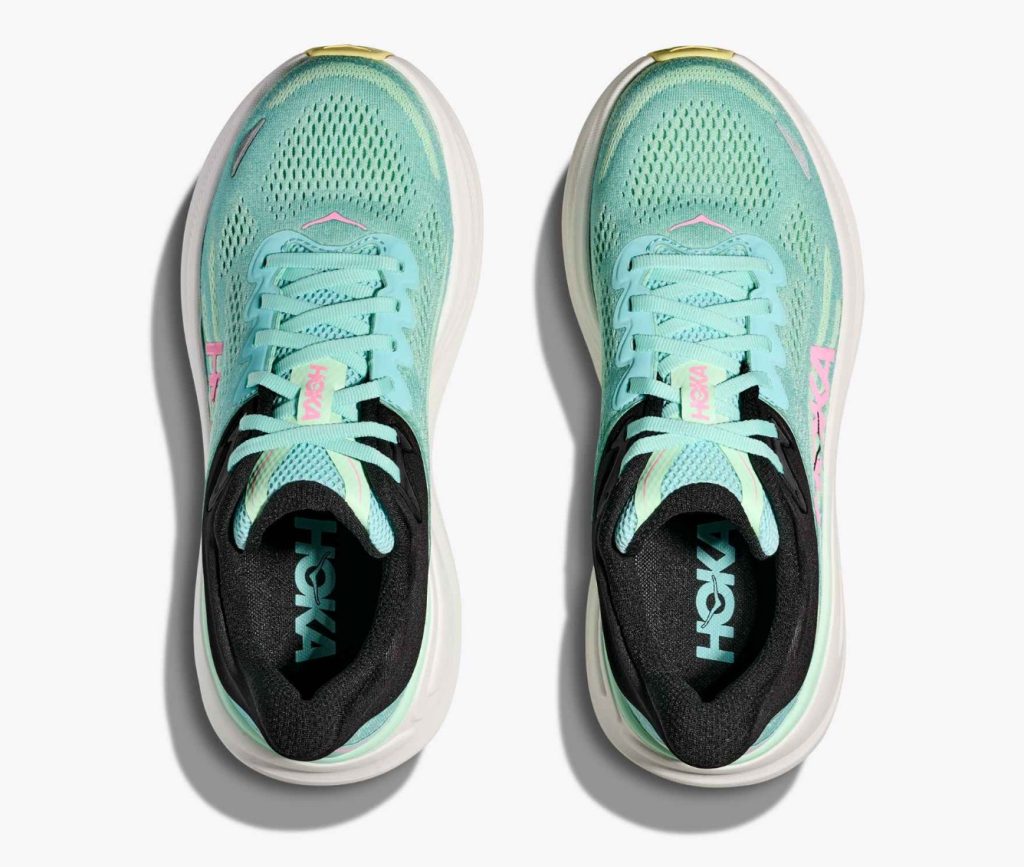
Sizes: Men’s US 7-14, Women’s US 5-12. Hoka generally offers Medium (D), Wide (2E), and sometimes Extra-Wide (4E) options in popular models, though availability varies by color.
Pros:
- Unparalleled cushioning and comfort for extended wear.
- Excellent for absorbing impact and reducing joint stress.
- Durable for high mileage.
- APMA Seal of Acceptance.
Cons:
- Can feel bulky to some users due to the high stack.
- Less ground feel compared to lower-profile shoes.
- May not be ideal for those seeking a “fast” running shoe.
2. ASICS GEL-Kayano Series (e.g., ASICS GEL-Kayano 31)
The ASICS GEL-Kayano is a legend in stability footwear. If you’re an overpronator or need significant arch support and motion control, the Kayano is a consistent top performer. It perfectly blends structured support with responsive cushioning, ensuring your foot stays aligned and comfortable even on long days. The latest versions, like the 31, continue to refine this balance.
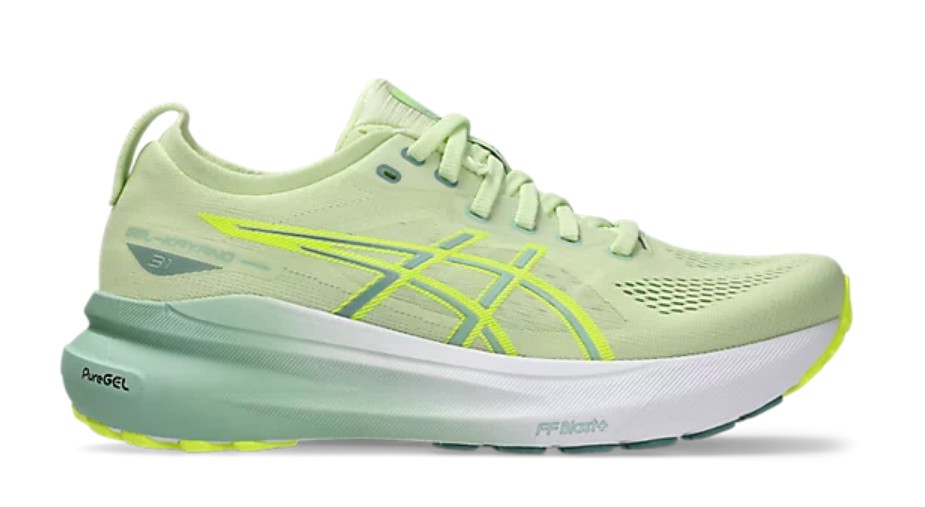
Specifications:
- Latest Version: ASICS GEL-Kayano 31 (released mid-2024). The GEL-Kayano 32 is expected in mid-2025.
- Cushioning: Features FF BLAST™ PLUS ECO foam combined with PureGEL™ technology.
- Heel Drop: Typically 10mm.
- Weight: Around 10.5 oz (Men’s US 9).
- Outsole: ASICS LITE™ Rubber for durability and grip.
Key Features:
- 4D GUIDANCE SYSTEM™: Provides adaptive stability to guide your foot naturally.
- PureGEL™ Technology: Strategically placed for softer landings and improved shock absorption.
- Engineered Stretch Knit Upper: Offers a breathable, adaptive, and supportive fit.
- Wide Base: Enhances stability, especially during transitions.
Colors (Examples): Classic colorways include Black/Graphite Grey, White/Pure Silver, Glacier Grey/Pure Silver, various blues like Indigo Blue/Sky. Seasonal and limited editions offer brighter options.
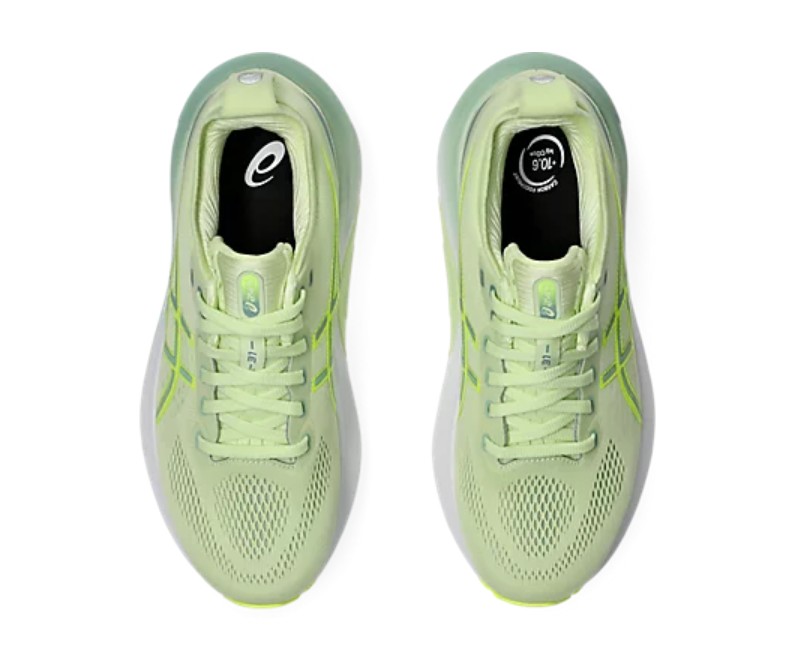
Sizes: Men’s US 6-15, Women’s US 5-12. Available in Standard, Wide, and occasionally Extra-Wide (2E, 4E for men’s).
Pros:
- Exceptional stability for overpronators.
- Balanced cushioning provides comfort without feeling overly soft.
- Highly durable for consistent use.
- APMA Seal of Acceptance.
Cons:
- Can feel a bit bulky or firm to some neutral runners.
- Higher price point due to advanced technology.
3. Brooks Ghost Series (e.g., Brooks Ghost 16)
The Brooks Ghost is a beloved neutral running shoe that doubles as an excellent orthopedic sneaker for its balanced cushioning and smooth ride. It’s a versatile workhorse, offering consistent comfort without excessive stability features. If you have a neutral stride and simply need reliable, soft cushioning, the Ghost is often the answer.
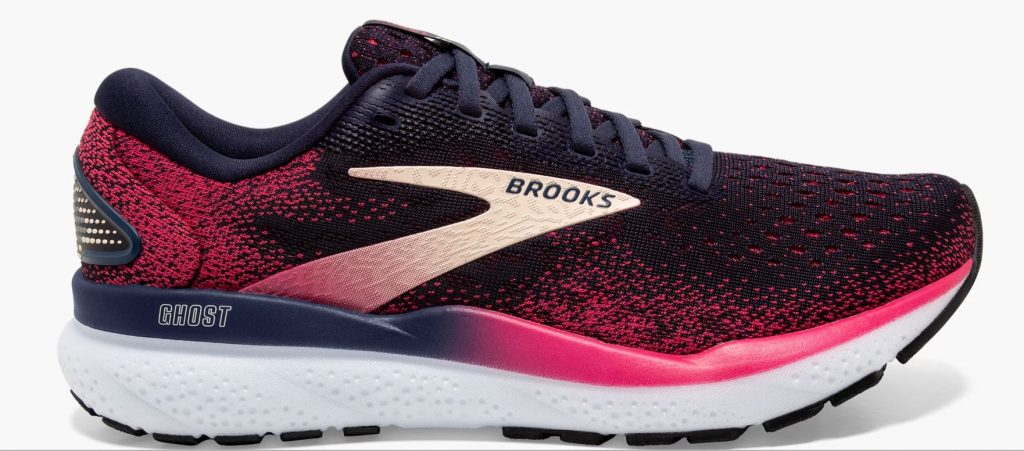
Specifications:
- Latest Version: Brooks Ghost 16 (released May 2025).
- Cushioning: DNA LOFT v3 cushioning, infused with nitrogen for a soft and responsive feel.
- Heel Drop: 12mm.
- Weight: Around 8.5 oz (Men’s US 9).
- Outsole: RoadTack rubber for durability and traction.
Key Features:
- DNA LOFT v3 Cushioning: Delivers a soft, smooth, and lightweight ride.
- Segmented Crash Pad: Adapts to your unique stride for smooth transitions.
- Engineered Air Mesh Upper: Provides breathability and a secure, comfortable fit.
- Optimal for Heel Strikers: 12mm drop particularly benefits those who land on their heel.
Colors (Examples): Known for a vast selection, including Black, White, Grey, Blue Depths, Frosty Green, and numerous seasonal limited edition colorways and patterns.

Sizes: Men’s US 7-15, Women’s US 5-12. Commonly available in Narrow (2A), Medium (B/D), Wide (2E), and Extra-Wide (4E) widths, offering excellent fit options.
Pros:
- Reliable, balanced cushioning for everyday comfort.
- Smooth transitions for a natural feel.
- Excellent durability for a neutral shoe.
- Available in a wide range of widths.
Cons:
- May not provide enough stability for severe overpronators (consider the Adrenaline GTS for that).
- Higher heel-to-toe drop might not suit all foot strike patterns.
4. New Balance 990 Series (e.g., New Balance 990v6)
The New Balance 990 series has a long-standing reputation for combining premium comfort, exceptional support, and iconic style. Originally designed for performance, its advanced features like superior arch support and heel stability make it a fantastic everyday orthopedic sneaker. It’s truly a blend of fashion and function, perfect for those who want both.
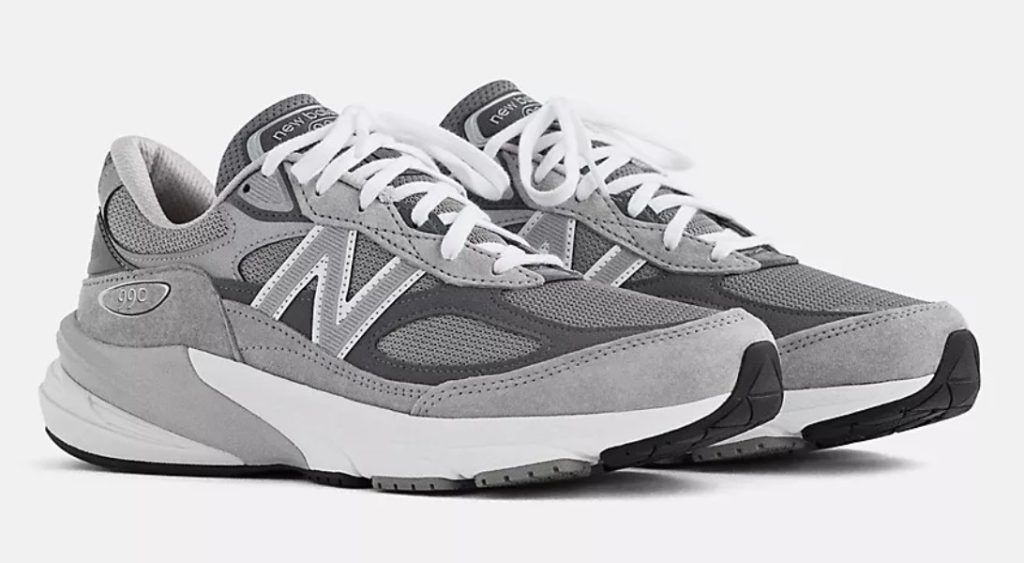
Specifications:
- Latest Version: New Balance 990v6 (originally released November 2022, with new colorways and special editions frequently released, making it current for 2025).
- Cushioning: FuelCell and ENCAP midsole for a blend of cushioning and durability.
- Heel Drop: 10mm.
- Weight: Approximately 13.7 oz (Men’s US 9).
- Outsole: Durable rubber for long-lasting wear.
Key Features:
- Premium Materials: Often features pigskin suede and mesh upper for a luxurious feel and breathability.
- FuelCell/ENCAP Midsole: Provides responsive cushioning and firm support.
- Structured Heel Counter: Enhances rearfoot stability and alignment.
- Made in USA Craftsmanship: Known for high-quality construction.
Colors (Examples): Most popular in classic Grey, Black, and Navy. Also available in various seasonal colors like Olive Green, Dark Cyan, and occasional vibrant collaborations (e.g., Action Green, Rich Earth).
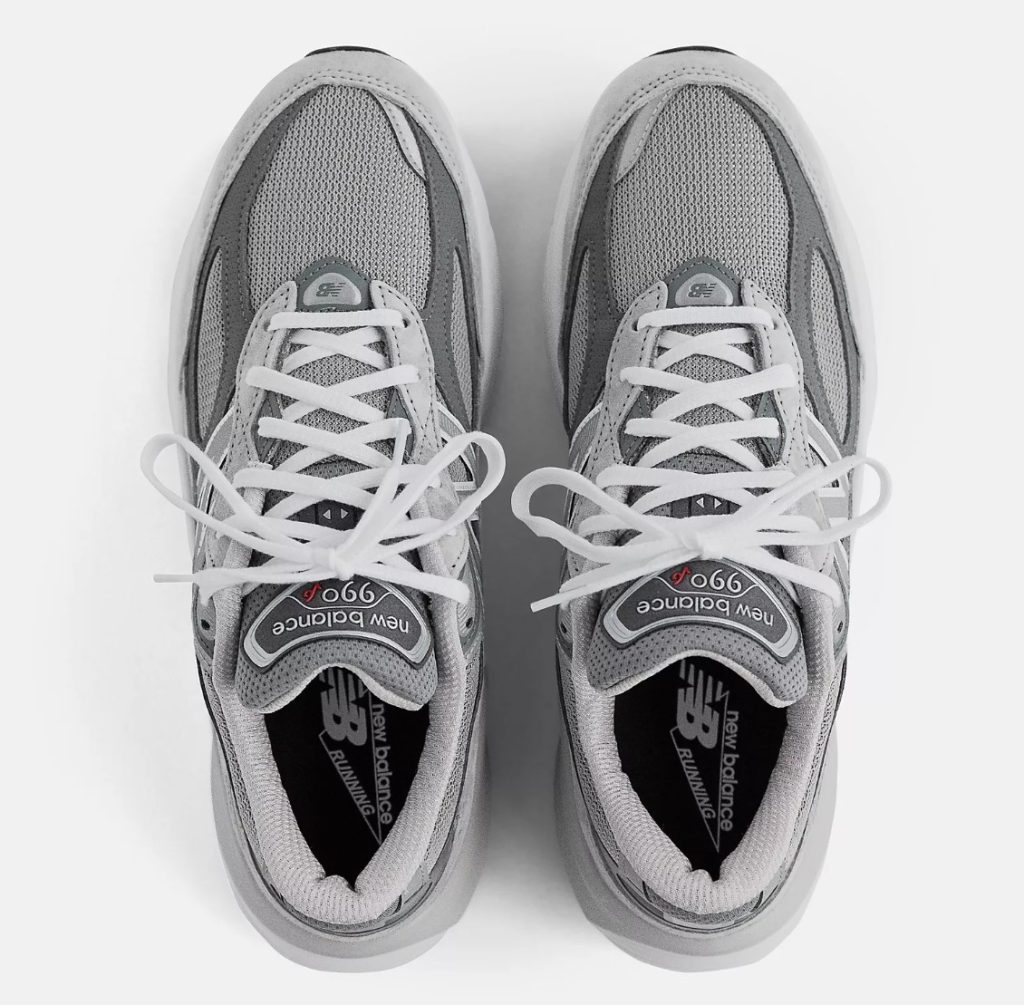
Sizes: Men’s US 4-16, Women’s US 5-12. Often available in Standard, Wide, and Extra-Wide (2E, 4E) widths, particularly in core colors.
Pros:
- Exceptional comfort and support for all-day wear.
- Iconic, versatile style that pairs well with many outfits.
- Highly durable construction.
- Excellent for casual wear and walking.
Cons:
- Premium price point.
- Can feel a bit heavy compared to some lighter running shoes.
5. Orthofeet (Brand Focus: Various Models)
Orthofeet is a brand singularly focused on therapeutic and orthopedic footwear. Their entire product line is designed to address a wide range of foot conditions, making them a top choice if you have specific medical needs like bunions, hammertoes, severe plantar fasciitis, or diabetes-related foot issues. They prioritize customizable support and ease of use.
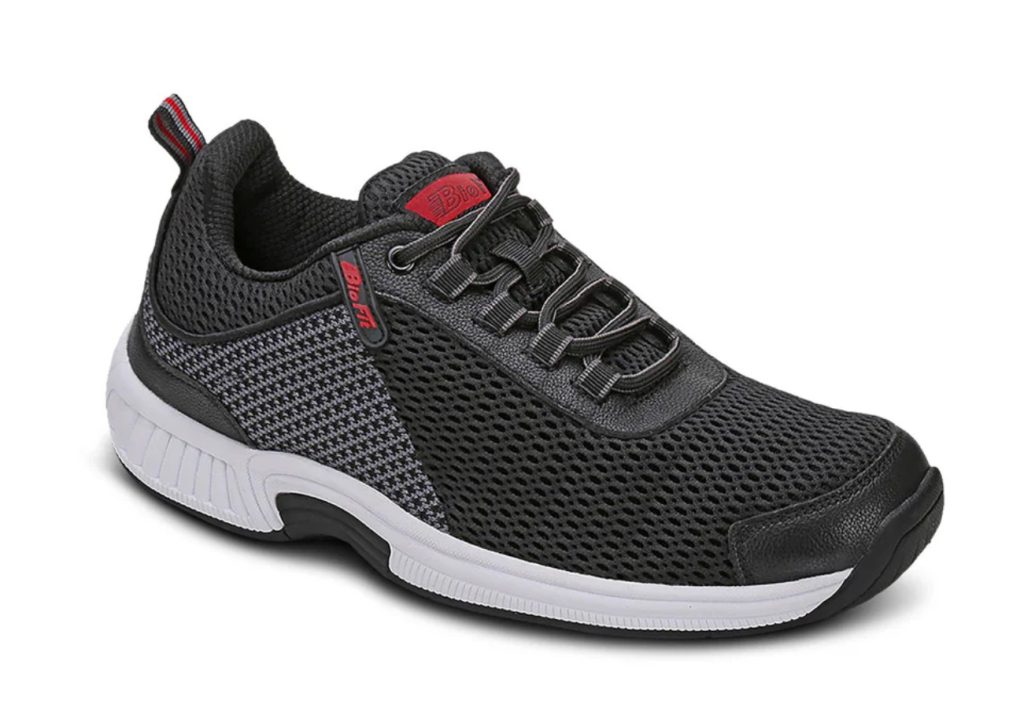
Specifications (General Across Models):
- Latest Versions: New models and updates are continuously released, rather than strict annual cycles. Examples include the Edgewater (walking/daily wear), Hunter (boot), and Hands-Free Tilos (slip-on).
- Cushioning: Often feature the “Ortho-Cushion System” for multi-layer support and shock absorption.
- Insoles: Come with premium orthotic insoles that are often removable and adjustable (with arch boosters).
- Uppers: Vary from stretchable, water-repellent fabrics to leather and mesh.
Key Features:
- Anatomical Arch Support: Designed to provide biomechanical support.
- Wide Toe Box: Crucial for relieving pressure on toes and bunions.
- Customizable Fit: Many models include removable spacers and adjustable arch boosters.
- Ergonomic Sole: Often features a mild rocker for smooth gait.
- Non-Slip Outsoles: For enhanced safety and stability.
- Multiple Widths: A standout feature for accommodating various foot shapes.
Colors (Examples): Generally available in practical, versatile colors like Black, Grey, Navy, Brown, and Tan. Specific styles may offer muted pastels or two-tone designs.
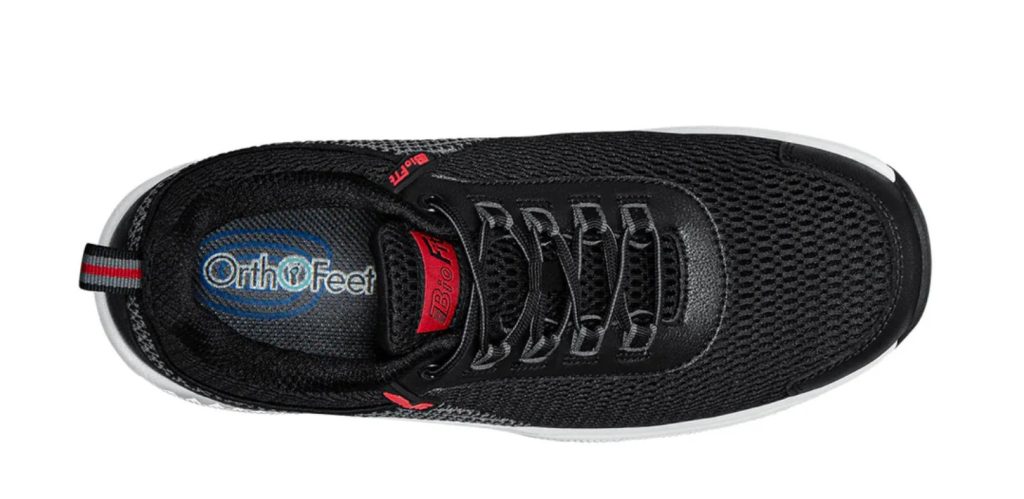
Sizes: Men’s US 7-14, Women’s US 5-12. Orthofeet is renowned for its extensive width options: Medium, Wide, X-Wide, and even XX-Wide (4E/6E for men’s) in many styles, along with half sizes.
Pros:
- Specifically engineered for various foot conditions.
- Exceptional customizable support with removable insoles.
- Outstanding range of widths for a precise fit.
- Many styles offer easy on/off features.
Cons:
- Style, while improved, might be more utilitarian than some mainstream fashion sneakers.
- May require a break-in period for some users.
What Key Features to Look For When Choosing the Best Orthopedic Sneakers
Choosing the best orthopedic sneakers isn’t a one-size-fits-all situation. Your unique foot type and specific needs play a crucial role. As someone who’s spent a lot of time researching and understanding footwear, I can tell you that a little knowledge goes a long way. Here’s what I always advise looking for:
Know Your Foot Type and Needs
Before you even start looking at shoes, take a moment to understand your feet. Do you have high arches, low arches (flat feet), or a neutral arch? Are you an overpronator (foot rolls inward excessively), a supinator (foot rolls outward), or do you have a neutral stride? If you’re unsure, a professional gait analysis or a 3D foot scan at a specialty shoe store can provide invaluable insights.
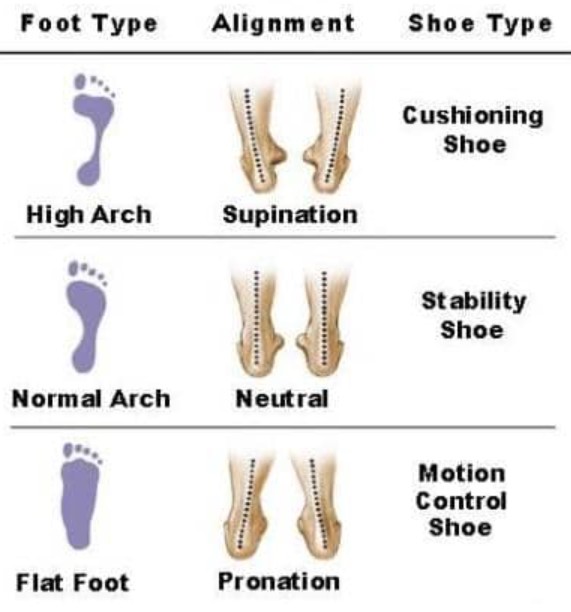
Essential Features for Optimal Support
- Arch Support: This is paramount for proper foot alignment. Some shoes have excellent built-in arch support, while others are designed to accommodate custom or over-the-counter insoles. Check if the sockliner is removable if you plan to use your own orthotics.
- Cushioning: Look for ample cushioning that reduces impact and provides comfort without feeling overly soft or “mushy.” The right amount of cushioning acts as a shock absorber, protecting your joints.
- Wide Toe Box: This is a game-changer, especially for conditions like bunions or hammertoes. A spacious toe box allows your toes to splay naturally, preventing pressure and rubbing.
- Heel Stability: A firm heel counter helps to keep your foot securely in place, preventing excessive movement that can lead to instability and injury.
- Stability and Motion Control: Features like reinforced midsoles, medial posts, or GuideRails are crucial for preventing overpronation or supination, ensuring your foot moves in a healthy, aligned manner with each step.
- Adjustable Closure: Laces, straps, or even some Velcro systems allow you to customize the fit, which is helpful if your foot size fluctuates throughout the day due to swelling.
- Breathable Materials: Uppers made from engineered mesh or high-quality leather ensure durability and breathability, keeping your feet cool and dry. Avoid stiff or restrictive materials.
- Lightweight Design: Heavy footwear can quickly tire your feet and legs. Opt for lighter shoes that promote ease of movement and reduce overall strain.
Common Mistakes to Avoid
- Ignoring Comfort for Style: While style is important, function should always come first when choosing orthopedic shoes. Luckily, you don’t have to compromise much anymore!
- Buying the Wrong Size: Our feet can change size over time. Always measure your feet before purchasing, and remember that width is just as important as length.
- Not Replacing Worn-Out Shoes: Even the best orthopedic sneakers lose their supportive properties over time. Pay attention to signs of wear and tear, and replace them when they no longer offer adequate support.
The Benefits of Investing in Best Orthopedic Sneakers
Choosing the best orthopedic sneakers isn’t just about alleviating immediate pain; it’s a long-term investment in your overall health and well-being. From improved daily comfort to enhanced physical activity, the advantages are numerous:
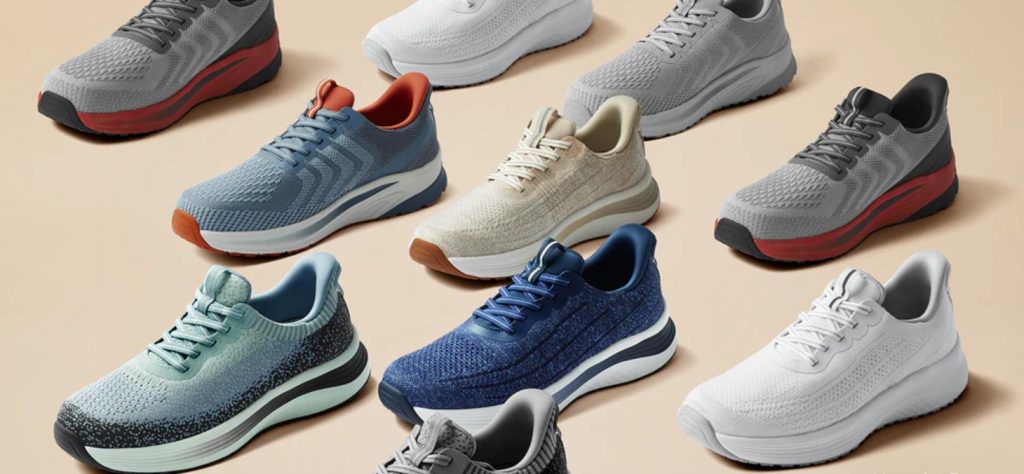
- Significant Pain Relief: These shoes are designed to target and reduce discomfort caused by common foot ailments, allowing you to walk, stand, and move with greater ease.
- Improved Body Alignment: By providing proper support from the ground up, orthopedic sneakers help align your entire body, reducing strain on your ankles, knees, hips, and lower back. This can lead to better posture and reduced muscle fatigue.
- Enhanced Comfort Throughout the Day: With their superior cushioning and ergonomic designs, these sneakers ensure your feet remain comfortable, even during extended periods of activity or standing.
- Prevention of Further Injury: The stability and protective features help to reduce excessive foot motion, minimizing the risk of sprains, strains, and other common overuse injuries.
- Increased Mobility and Activity Levels: When your feet are comfortable and supported, you’re more likely to engage in physical activities you enjoy, leading to a more active and healthier lifestyle.
- Style Meets Function: Gone are the days of sacrificing aesthetics for comfort. Today’s best orthopedic sneakers offer modern, sleek designs that fit seamlessly into any wardrobe, allowing you to look good while feeling great.
How to Maximize Your Orthopedic Sneaker Experience
Finding the right pair is a fantastic first step, but a few simple tips can help you get the most out of your orthopedic sneakers:
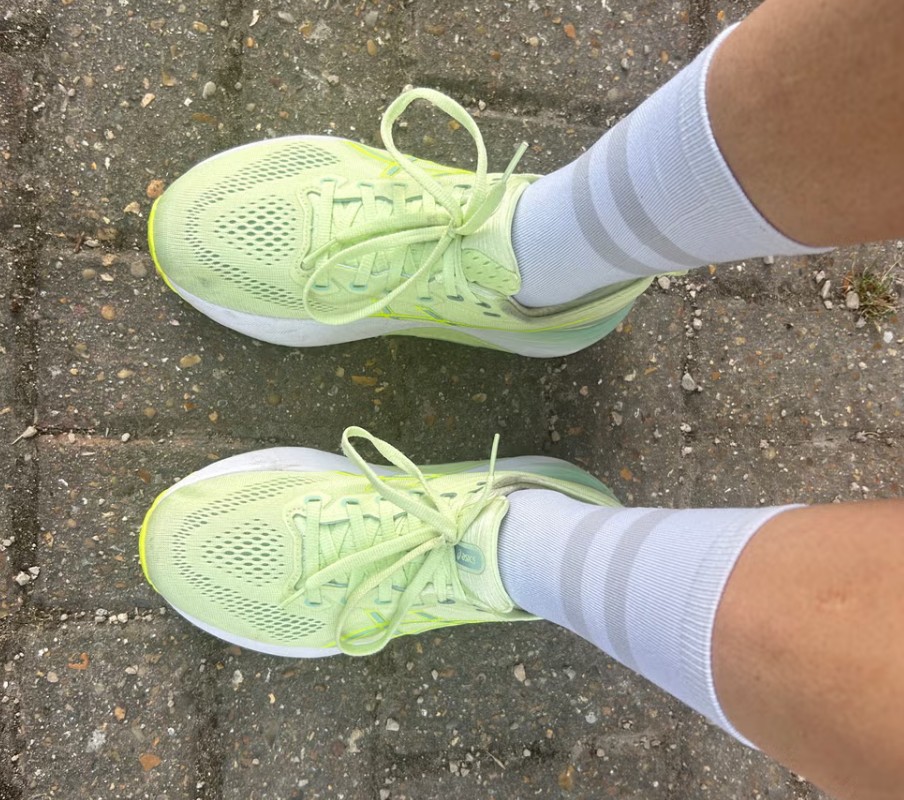
- Get a Professional Fitting: I can’t stress this enough! Visiting a specialist shoe store for a professional fitting ensures you get the correct size and width, accounting for any unique foot characteristics.
- Listen to Your Feet: Pay attention to how your new shoes feel. While some a break-in period is normal, persistent discomfort might mean they’re not the right fit for you.
- Know When to Replace Them: Even the most durable orthopedic sneakers have a lifespan. Generally, after 300-500 miles of walking or running, or if you notice significant wear in the sole or upper, it’s time for a new pair. Continuing to wear worn-out shoes can negate their benefits.
- Consider Orthotics (if needed): If your doctor or podiatrist recommends custom orthotics, ensure your chosen sneakers have removable insoles that can accommodate them comfortably. Many of the top brands are designed with this in mind.
- Check for FSA/HSA Eligibility: Many orthopedic sneakers and related footwear products may be eligible for reimbursement through Flexible Spending Accounts (FSA) or Health Savings Accounts (HSA). Always check with your provider for confirmation and keep your receipts.
FAQs About Orthopedic Sneakers
I get a lot of questions about orthopedic footwear, so I’ve compiled some of the most common ones to help you out:
Are orthopedic sneakers just for older people or those with severe foot problems?
Absolutely not! While they greatly benefit individuals with specific conditions, anyone can benefit from the enhanced support and cushioning offered by orthopedic sneakers. Many athletes and active individuals wear them to prevent injuries and ensure long-term foot health.
Can I wear running shoes as everyday orthopedic shoes?
Yes, many running shoes, especially those from reputable brands like Hoka, ASICS, and Brooks, are designed with advanced orthopedic features (cushioning, stability, support) that make them excellent for daily wear, providing consistent comfort and support.
How do I know if I need custom orthotics or if a good orthopedic sneaker is enough?
This is best determined by an orthopedic doctor or a podiatrist. They can assess your foot structure and gait to recommend whether over-the-counter inserts, specific orthopedic shoes, or custom orthotics are most appropriate for your needs.
Do orthopedic sneakers come in different widths?
Yes, many of the best orthopedic sneakers, particularly those from brands like New Balance, Brooks, and Orthofeet, are available in multiple widths (e.g., Narrow, Medium, Wide, Extra-Wide) to ensure a truly customized and comfortable fit.
Are orthopedic sneakers more expensive?
A: While some high-performance orthopedic sneakers can have a higher price point due to advanced technology and materials, there are also excellent budget-friendly options available. View it as an investment in your long-term foot health and overall well-being.
Conclusion: Take the Next Step Towards Ultimate Comfort
Choosing the best orthopedic sneakers is a proactive step towards a life with less pain and more freedom of movement. Modern designs mean you no longer have to compromise on style to achieve ultimate comfort and support. Whether you’re dealing with specific foot conditions or simply seeking a more comfortable and supportive option for your daily activities, there’s a perfect pair waiting for you.
As online service providers for various shoe brands, my team and I are passionate about helping you find that perfect match. We can guide you through the latest models, discuss your specific needs, and provide personalized recommendations to ensure your feet are happy.
Ready to transform your footwear experience? Add us on WhatsApp today for expert advice, exclusive insights, and to become part of our private client community!




